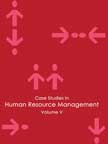Infosys Campus Connect - A Solution to
Talent Crunch Challenge?
|
|
Case Details:
Case Code: HROB151
Case Length: 18 Pages
Period: 2004 - 2012
Organization: Infosys Limited
Pub Date: 2012
Teaching Note: Not Available
Countries: India
Industry: IT and Consulting Services
To download Infosys Campus Connect - A Solution to
Talent Crunch Challenge?
case study
(Case Code: HROB151) click on the button below, and select the case from the list of available cases:

OR
 Price:
Price:
For delivery in electronic format: Rs. 500;
For delivery through courier (within India): Rs. 500 + Shipping & Handling Charges extra
»
Human Resource, Organization Behavior Case Studies
» HRM Short Case Studies
» View Detailed Pricing Info
» How To Order This Case
» Business Case Studies
» Area Specific Case Studies
» Industry Wise Case Studies
» Company Wise Case Studies
Please note:
This case study was compiled from published sources, and is intended to be used as a basis for class discussion. It is not intended to illustrate either effective or ineffective handling of a management situation. Nor is it a primary information source.
Chat with us

Please leave your feedback

|
|




<< Previous
"The Campus connect program developed by Infosys focuses on developing the competitive levels of the students. We aim to achieve this by training the faculty and also by organizing webinars and seminars for the students."
1
- Srikantan Moorthy, Senior Vice - President and Group Head, Education and Research, Infosys, 2010.
"There is a need for the Industry to take active interest in the educational institutions where their potential employees are groomed and be involved"
2
- H.S Ballal, Pro Chancellor, Manipal University,3 2010.
|
The early 21st century saw India emerging as a global leader in the Information Technology (IT) sector. The growth rate of the IT industry in India from 1992-2001 was 50%4 - almost double that of the US. Moreover all businesses across the world as well as in India were completely dependent on IT applications for their operations. So, there were numerous employment opportunities in IT services in India. Since the IT industry was 'people-centric', the demand for quality manpower was high.5 For the IT companies to remain ahead of the competition in the global market place, manpower with product and research-based project knowledge was quite essential.6
|

|
So, educational institutions and the IT industry realized the need for increasing the number of industry-ready graduates to meet the growing demands of the IT industry.7 IT companies started to bank on engineering colleges for new employees, as they churned out several thousand graduates every year. But the IT majors noticed that the graduates from engineering colleges had several skill gaps while serving their customers and that the companies had to spend a lot of money on training them.8 For instance, Infosys on an average spent about US$ 170 million and six months to one year of time training newly joined graduates in 2007.9
NASSCOM10 reported that only 25% of engineering college graduates could be employed immediately in the IT industry.11 due to which organizations were not able to find skilled and immediately employable engineering graduates.12 In 2002-2003, out of 129,000 IT engineering graduates, only 32,250 were capable of competing with the global workforce.13 During 2003-04, the total numbers of IT students was 141,000; of them 80,000 were employed and in 2004-2005, the total number of IT graduates was 165,000. Of them, 94,000 were employed in various IT related jobs.14
Infosys, the second largest software services company15 in India in 2011,16 understood that academic institutions required active co-operation and support from the IT industry to meet the manpower demand.17 This prompted Infosys to launch a program called 'Campus Connect' in 2004. The aim of this program was to increase the rate of employability of engineering graduates in the IT industry. Infosys Campus Connect was an Industry-Academia interaction program intended to enhance the skills of engineering graduates and to create a pool of talented industry-ready engineering graduates in colleges itself. Many analysts opined that with the help of Infosys Campus Connect, relations between the IT industry and the colleges could be enhanced so that the requirements of the IT industry and academia could be met.
Reasons for Talent Crisis
- Next Pages >>
|
|








